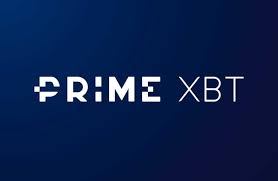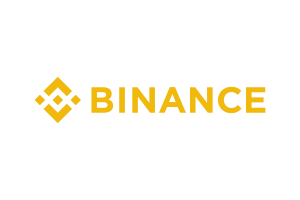The end of the road for Tradable – FinanceFeeds opinion
Tradable was an innovative, fresh and ultra-modern idea. As it dwindles further into the background, we take a close look at what stopped it entering the mainstream and why trading platform development is the single area of this industry which is not open to newcomers

For innovative and groundbreaking entrants into the retail FX platform business, there is surprisingly very little market opportunity.
Contrary to almost every other aspect of the electronic trading industry, in which innovation and continual research and development is the absolute key to not only pushing the boundaries of technological advancements and creating value propositions in an increasingly competitive market structure, but also to hold the flag as the financial technology business is largely driven forward by the electronic trading sector in both institutional and retail divisions.
Effectively, banks, institutional firms and retail technology vendors lead the way for the shaping of the future of the world’s financial markets ecosystem, and have done for many years.
London, the world’s most important global financial center and the number one international center for financial technology development, has been for three decades at the forefront of development for the technology that powers the financial markets at Tier 1 bank level, and at retail level is home to some of the largest and most long-established brokers in the world, all of which have their own proprietary platforms upon which they expend vast resources in order to maintain their edge at the top, an example being CMC Markets ‘Next Generation’ platform which cost over £100 million to develop and according to our estimate, approximately £150,000 per month to support and operate in house.
On a global scale, however, it is third party platforms that dominate, rather than proprietary ones, and therein lies the absolute difference between every other aspect of our entire industry and the platform world, that being that despite the continual and vast development of new technology and refinement of existing technology, when it comes to third party retail trading platforms, it is almost completely impossible to innovate, and the entire market is dominated by just one company – MetaQuotes.
It has been nigh on impossible for many new firms with API-based platforms to gain any traction over the traditional MetaTrader 4 platform which was initially designed to operate in a closed ‘warehouse’ environment and not to connect to external liquidity feeds from prime brokerages, and has had to be adapted by specialist liquidity management technology and bridge providers in order to operate in today’s retail trading environment.
That in itself was a very significant indicator that MetaTrader 4’s dominance would be set in concrete. When the retail trading firms that do not develop their own platforms switched en masse away from the warehouse model at the beginning of this decade and the entire trading topography began to emulate the institutional world, instead of eschewing MetaTrader and opting for all new, a-book orientated FIX API-connected platforms with novel applications and an opensource developers area for the purpose of designing new trading tools, the vast majority of brokerages remained steadfast in their loyalty to MetaTrader 4 and a whole host of specialist developers began adapting its interface in order to connect it to live liquidity streams.
Tradable, led by the astute, slick and dynamic Jannick Malling is a particular case in point. The platform appeared on the scene just over four years ago, a bastion of leading edge modernity, oozing ‘new generation’ right the way from the composed classiness of Mr Malling himself right the way through to the execution of the platform’s design. The world’s very first application-based platform, within which users could develop their very own trading applications, and the ability to avoid needing any liquidity bridge, as it connected directly into a broker’s infrastructure and a liquidity provider’s price feed via API, revolutionary in the retail trading platform business at the time.
So why did it fail?
Just like a fine restaurant, with a top quality menu, whose chef provides a fine epicurean experience, painstakingly arranging the smoked salmon carpaccio on translucent plates, lit beneath, with the pickled radish and lemon segments shaped in an arrangement that alludes more to art than cuisine, yet positions the restaurant in an unknown suburb of a small town, the burger and fries of the mainstream will make the larger profit.
Tradable, in that case, is a Danish razor shell with parsley jelly, buttermilk snow and horseradish, served in a top quality marina-side restaurant, whereas MetaTrader 4 is a gourmet burger, with relish in a sachet from an outside catering supplier.
What has become patently apparent over recent months is that Tradable has begun to disappear entirely. Slow takeup and the unfaltering dominance of MetaTrader 4 is one major factor that a developer of any new platform must consider. In the Far East, a massively important region for retail trading, Expert Advisers (EA), which are automatic trading robots are very popular, and MetaTrader 4’s compatibility with the several thousand EAs that are currently available is one reason for its initial rise to absolute dominance.
With such a stranglehold over the entire market, those attempting to reinvent the wheel must do so by not spending a fortune, and by knowing their niche, as well as respecting the massive shadow that the one all-encompassing company – MetaQuotes – casts over everyone else.
This was Tradable’s achilles heel.
Instead of going the route of Spotware Systems with its cTrader and cAlgo solutions, in which Spotware anchored its development by gaining a very large customer – FxPro – in order to be able to have a steady core income whilst evolving products as well as being able to provide customized platforms for brokers that commission the firm to build one for them instead of going to the extent of investing in a proprietary platform, Tradable held itself out as a firm with ambitious new ideologies and attempted bold steps into uncharted waters.
Japan is a very important case in point.
Just two and a half years ago, Tradable had been taken up by a handful of brokers and was still in start-up mode. India-focused, UK-based Tradenext was one of the very first firms to adopt the platform, however the volume conducted on Tradable was negligible and Tradenext continued to major on MetaTrader 4, even though Tradable was in its ‘Tesla moment’ of revolutionary wow factor appeal at the time.
This should perhaps have been a measure to bear in mind and take into account for the firm, but it wasn’t. Tradenext went West, and takeup among other brokers was relatively tardy.
Instead of regrouping and looking toward securing a core client in a familiar market, Tradable looked toward entering Japan, a notoriously impenetrable region with an equally impenetrable allegiance to domestic market companies. Tradable held hackathons in Tokyo, where young developers could produce their own trading applications against each other.
The company spent a massive amount of resources wooing large Japanese companies, which is a painstaking and very expensive task that usually amounts to corporate loyalty to Japanese firms an a hostility toward those from overseas.
A costly process for Tradable, however MONEX Group did indeed take the platform onboard, Japan’s uniqueness in the Far East in its aversion to MetaTrader 4 and lack of use of automated robots and EAs being an advantageous point, but still the Tokyo-centric nature of the country’s trading environment and its hierarchical business structure is always too much for Western firms to manage.
MONEX has since discontinued the Tradable platform.
The company expanded its presence away from its native Denmark into new important regions including London, St Petersburg, Singapore and Hong Kong, and employed 35 staff, yet had only two customers, one being MONEX which had cost the firm a fortune to onboard as is normal in Japan, only to have the whole thing discontinued shortly afterwards.
Mr. Malling himself has retreated somewhat. A formerly prominent industry figure who engaged with allcomers, was a regular attendee and speaker at industry conferences and was always available has become notable by his complete absence.
Many industry leaders have experienced the same unresponsiveness.
As far as this can possibly be researched, we estimate that Tradable’s entire expenditure thus far to be approximately $10 million, however the lack of market traction and recent retraction and corporate silence generaly speaks volumes.
And unfortunately in this case I don’t mean trading volumes.









